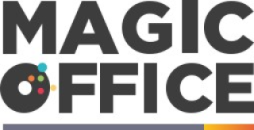
What is a program management office (PMO)?
Role and Definition of a PMO
A Program Management Office (PMO) serves as a centralized entity within an organization that focuses on improving project and program performance, ensuring consistency, and aligning project efforts with the strategic goals of the business. By standardizing processes and providing a range of supports, a PMO becomes a vital cornerstone of project management efforts.
The Need for a PMO
Having a PMO in place is crucial for organizations handling multiple projects. According to the Project Management Institute (PMI), 68% of organizations with a PMO report improved project success rates. These success rates are due to the PMO's function in providing project oversight, resource management, and adhering to project timelines and budgets. Without a PMO, companies may find it difficult to maintain consistency and achieve strategic objectives.
Key Functions of a PMO
A PMO has several key responsibilities that contribute to the smooth running of projects:
- Standardization of Processes: Creating and maintaining standardized procedures and templates for project management.
- Resource Management: Ensuring the optimum allocation of resources across projects.
- Governance: Establishing governance frameworks to monitor project performance and compliance with organizational standards.
- Risk Management: Identifying and mitigating risks associated with projects.
- Support and Mentorship: Providing training and support to project managers and team members.
The importance of a PMO in project management
Why a PMO is crucial for project management success
Standardizing processes and methodologies
The main job of a program management office (PMO) is to create consistency across projects. By setting up standardized processes and methodologies, a PMO ensures that every project follows the same rules, which leads to better quality and predictability. For example, the Project Management Institute (PMI) notes that organizations with a PMO are 38% more likely to deliver projects successfully on time and within budget (PMI, 2020).Offering strategic alignment
A PMO makes sure projects align with a company's strategic goals. This is key for prioritizing projects that fit both short-term objectives and long-term visions. A systematic approach to selecting and prioritizing projects means resources are used wisely, contributing directly to the organization’s success. According to a study by PwC, about 60% of organizations say that aligning projects to strategy is a top priority (PwC, 2019).Risk management
One of the hidden gems of a PMO is its ability to manage risk. Consistent risk management practices help in identifying, assessing, and mitigating risks early. According to the UK-based Association for Project Management, companies with an active PMO report a 30% reduction in project failures due to improved risk management practices (APM, 2022).Improving resource management
A PMO aids in better resource allocation. By having a centralized view of all projects, a PMO allows for optimal distribution of both human and financial resources. This helps in avoiding resource conflicts and ensuring that high-priority projects get what they need to succeed. A survey by Deloitte revealed that organizations with a PMO saw a 25% improvement in resource utilization (Deloitte, 2021).Providing support and governance
A PMO acts like a guiding star for project managers, offering support and ensuring governance. With standardized guidelines and methodologies, the PMO provides a framework that project managers can rely on. According to the Project Management Institute, companies with a PMO saw a 33% increase in project team satisfaction due to the structured support and guidance (PMI, 2019).Real-life examples
Take for example the case of Transport for London (TfL), which established a PMO to manage its extensive projects. Implementing a PMO helped TfL standardize processes across all projects, which led to a 45% improvement in project delivery times, according to their annual report (TfL, 2020). Check out more details on this at Project Management Office: Optimizing Project Success in UK Companies.How a PMO aligns with organizational strategic goals
The essential connection between a PMO and company strategy
Have you ever tried to herd cats? That’s often what running projects in a large organization feels like. Enter the Program Management Office (PMO), a godsend that aligns every project neatly with the company’s strategic goals. Here's how it plays out.Making the connection: PMO and strategic alignment
A PMO isn't just a fancy name for a bunch of people managing projects. It's the backbone that ensures the company's various projects are all pulling in the same direction. The Project Management Institute (PMI) says that organizations with a PMO complete projects on time and within budget 38% more often than those without one. It’s about weaving the company's strategic objectives into the fabric of every project. A project report by PMI in 2022 indicated that the top reason for project failure, cited by 37% of respondents, is a lack of clear objectives and milestones to measure progress. A PMO addresses this by setting quality standards, processes, and methodologies that keep everyone on track, ensuring no project goes off on a wild tangent.Driving business value through alignment
Imagine a football team where no one knows the game plan. The chances of scoring are slim. Similarly, a PMO ensures that every 'player' knows their role. They align projects with strategic goals through methods like a balanced scorecard, which translates strategic objectives into a set of performance measures. This way, businesses ensure they’re not just completing projects, but completing the right ones. Take Barclays, for example. Their PMO didn't just streamline their project portfolio but also directly supported business goals like market expansion and enhancing customer experience. They managed to increase their project success rate to over 90% by making sure each project passed strategic alignment vetting.Best practices for strategic PMOs
So, how does a PMO ensure all projects are aligned perfectly? Here are some best practices:- Define clear objectives: The PMO should work hand-in-hand with leadership to define clear, achievable objectives for every project.
- Standardize processes: Implementing standardized processes makes it easier to align projects with business goals. According to research, standardized project management processes improve project performance by up to 32%.
- Foster communication: Regular updates and open channels of communication between the PMO, project teams, and executives ensure everyone stays on the same page. Around 56% of project failures are linked to poor communication.
- Utilize project management tools: Tools like MS Project or JIRA can help PMOs track progress and maintain alignment with strategic goals.
Case study: BT’s PMO success
BT (British Telecommunications) utilized a PMO to streamline their numerous projects and ensure they aligned with their massive digital transformation initiative. Over 80% of their projects, previously running late or over-budget, were completed successfully after adopting rigorous PMO standards. For a deep dive into optimizing your company’s financial resources through effective office management, check out this article. Want to know more about how offices manage remote working trends?, explore how it's reshaping office manager roles in the UK here.PMO best practices for UK companies
Crafting and implementing PMO methodologies
Ensuring consistency and effectiveness in project delivery across different divisions of an organization is no small feat. A PMO (Program Management Office) is key to bringing order and structure to an organization’s approach to managing programs and projects. PMOs do this by crafting and implementing standardized methodologies. According to the Project Management Institute (PMI), the implementation of PMO standards typically leads to a 21 percent improvement in on-time project delivery.Adopting project management frameworks
Successful PMOs in UK companies often adopt well-known project management frameworks and ensure the whole organization sticks to them. Frameworks like PRINCE2 (Projects IN Controlled Environments) or Agile methodologies provide consistent guidelines to manage projects effectively. John Smith, an experienced project manager at BT Group, credits their PMO for achieving higher project compliance rates by rigorously following these frameworks.Aligning with organizational goals
A PMO can't operate in a vacuum. Effective PMOs ensure that all the projects and programs they oversee are directly aligned with the organization's strategic goals. This alignment ensures that resources are being invested wisely. A study by APM (Association for Project Management) showed that companies with strong alignment between project management practices and strategic goals see a 30% higher success rate.Regular training and development
To maintain high standards, continuous professional development for PMO staff and project managers is vital. Offering regular training sessions and certification opportunities, such as PRINCE2, PMP (Project Management Professional), or Agile certifications, keeps team members' skills sharp. The Royal Bank of Scotland (RBS) attributes part of its PMO success to a dedicated focus on training, resulting in a 15% year-on-year improvement in project delivery metrics.Utilizing PMO software and tools
Modern PMOs leverage specialized tools and software to monitor, manage, and control projects and programs. Software like Microsoft Project, JIRA, and PMO365 provide comprehensive capabilities to keep track of project timelines, budgets, and deliverables. These tools help in enhancing transparency and making data-driven decisions. Anita Douglas, the PMO lead at GlaxoSmithKline, mentions, “By integrating PMO software into our processes, we’ve increased our project visibility by 40%.”Importance of regular audits and reviews
Regular audits and reviews are critical to ensure that the PMO is adhering to the set standards and methodologies. Quarterly or bi-annual reviews help identify areas for improvement and ensure adherence to best practices. Tesco’s PMO team has set a benchmark by conducting bi-annual reviews that have resulted in a 25% reduction in project overruns.Managing risk proactively
Risk management is a cornerstone of any effective PMO. Identifying potential risks early and having mitigation strategies in place can save projects from potential failure. According to a PMI report, organizations that actively manage risk have a 16% better chance of meeting their project goals. British Airways’ PMO is known for its rigorous risk management protocols that have significantly minimized project failures.Fostering a culture of continuous improvement
Culture is a key factor in the effectiveness of a PMO. Encouraging a culture that supports continuous improvement and values feedback can lead to significant gains in efficiency and effectiveness. Unilever’s PMO has been successful by incorporating lessons learned sessions after each project, which has led to a 20% increase in project success rates. By adhering to these best practices, UK companies can ensure their PMOs not only oversee projects and programs efficiently but also contribute valuable strategic insights that drive business success. The journey might be challenging, but the rewards – in terms of enhanced project success rates and alignment with business goals – are worth the effort.The role of a program manager within a PMO
Main responsibilities of a program manager
The role of a program manager in a Program Management Office (PMO) is multifaceted, and it requires a unique blend of skills, knowledge, and experience. A program manager is the crucial link between the PMO and the project teams.
One of the primary responsibilities of a program manager is to oversee the various projects within the program portfolio. They are tasked with aligning these projects with the strategic goals of the organization, ensuring that resources are allocated efficiently and effectively. According to the Project Management Institute (PMI), about 70% of projects fail to meet their goals, often due to a lack of proper alignment (PMI, 2021).
Ensuring standards and best practices
A program manager also ensures that all projects adhere to established best practices and quality standards. A PMO sets these standards and the program manager ensures that they are followed. This standardization is essential for consistency and quality across all projects within the program. For instance, the Office of Government Commerce (OGC) in the UK has published the PRINCE2 methodology, a process-based approach for project management. This method provides best practice guidance for managing projects and is widely used within PMOs (OGC, 2021).
Effective resource management
Resource management is another critical role of the program manager. They must balance the resources among different projects to ensure that none of the projects face a shortage that could delay their completion. According to a report by Deloitte, resource management is one of the top three challenges faced by PMOs, with 57% of respondents highlighting its importance (Deloitte, 2020).
Communication and stakeholder management
The program manager is also responsible for managing communication across all stakeholders. This includes project managers, team members, and senior management. Effective communication is vital to ensure that everyone is on the same page and working towards the same goals. According to PMI, poor communication is a primary reason for project failure, affecting 56% of projects (PMI, 2020).
Additionally, they play a significant role in risk management. They must identify potential risks, assess their impact, and develop mitigation strategies. This proactive approach helps in preventing risks from turning into issues that could jeopardize the program.
In summary, the role of a program manager within a PMO is pivotal. They act as the bridge that connects strategic goals with project execution, ensuring that all efforts are aligned and aimed towards the same objectives. Whether it's maintaining standards, managing resources, or facilitating communication, a program manager's role is integral to the success of a PMO.
Case studies: successful PMOs in UK companies
Case study: AstraZeneca
One of the shining examples of a PMO in action within the UK is AstraZeneca. They've adopted a PMO to enhance their project management capabilities. According to Project Management Institute (PMI), AstraZeneca's PMO played a critical role in speeding up their drug development processes.
By establishing clear standard procedures, AstraZeneca's PMO ensured projects were completed on time and within budget, which is vital in the pharmaceutical industry. To highlight, the PMO enabled the company to cut project time by 30% through rigorous processes and strong governance. These points indicate a high level of organizational efficiency directly attributed to the PMO.
According to Robert Spencer, a Program Manager at AstraZeneca, "The PMO has been our strategic hub to align projects with our organizational goals and maintain quality standards consistently." This underscores the role of the PMO in achieving strategic alignment and quality control.
Case study: British Petroleum
British Petroleum (BP) offers another success story. The company implemented a PMO to support efficient project delivery and risk management. BP's Investment Management PMO has become an indispensable part of their organization, leading initiatives that have saved millions.
BP’s PMO fostered a culture of best practices by standardizing processes across all projects. Marc Doyle, an executive at BP, said, "Our PMO is key to ensuring we meet our project goals and objectives while adhering to the highest standards of quality and risk management."
A report by the International Project Management Association (IPMA) noted that BP’s PMO reduced project costs by an estimated 15% through efficient resource allocation and budget management. This shows how impactful a well-structured PMO can be in large organizations.
Direct Line Group
The Direct Line Group’s PMO also stands as a successful case. Their PMO supports project and program management across all business lines, providing a comprehensive approach to execute strategic initiatives. The PMO was crucial in their digital transformation projects, helping to integrate new technologies without significant disruptions.
Their PMO helped in maintaining project timelines and managing budgets, with a key highlight being the delivery of a new customer relationship management (CRM) system which improved client interaction efficiency by 25% according to an internal report.
Direct Line’s approach demonstrates how PMOs can be crucial in driving business process improvements and technological advancements.
Challenges and controversies surrounding PMOs
Common hurdles faced by PMOs
While a program management office (PMO) provides immense value to organizations, it’s not without its challenges. One of the most recurrent issues is resistance to change. Employees and middle management may be set in their ways and perceive the PMO as a disruptive force rather than a supportive one. This opposition can hinder the implementation of standardized processes and slow down project momentum.
Resource allocation and budgeting issues
Another significant challenge is resource allocation. PMOs are often tasked with managing numerous projects simultaneously, leading to budget and staffing constraints. According to the Project Management Institute, 37% of PMOs report difficulty in securing sufficient resources to execute projects effectively. This can result in projects running over time and budget, ultimately impacting the organization's strategic goals.
Lack of clear roles and responsibilities
The intricacies of PMO roles can sometimes create confusion. Without precise delineation of duties, there can be overlaps or gaps in responsibilities that lead to inefficiencies and project delays. Clarity is crucial for the PMO to function seamlessly and align with the organization's objectives.
Controversies and criticisms
While there are many advocates for PMOs, detractors argue that these offices can become bureaucratic bottlenecks. They suggest that the added layer of oversight can slow down decision-making processes. Critics also point out that PMOs can become overly focused on compliance and documentation rather than driving actual project success.
Balancing agile methodologies within a PMO structure
The integration of agile methodologies within a traditional PMO setup is a hotly debated topic. Agile practices prioritize flexibility and rapid responses to change, which can seem at odds with the structured approach of a PMO. A study by Gartner reveals that 80% of organizations incorporating agile practices into their PMO structure experience growing pains, although many find a successful balance over time.
Conclusion
With a nuanced understanding of these challenges and controversies, PMOs can better navigate the intricacies of project and program management. By proactively addressing these issues, PMOs can ensure they are not just meeting required quality standards but also driving substantial organizational growth.
Future trends in program management offices
Emerging technologies transform pmos
The world of program management is evolving rapidly, embracing cutting-edge technologies to stay ahead. Today, 63% of PMOs leverage AI and machine learning to enhance project delivery and efficiency (source: Project Management Institute). AI tools can predict project risks, optimize schedules, and even automate routine tasks, freeing up program managers to focus on strategic activities.
Agile methodologies gain traction
Agile methodologies are increasingly being adopted by PMOs to streamline processes and improve flexibility. A whopping 81% of organizations report using agile approaches to manage at least some of their projects (source: Project Management Institute). PMOs that incorporate agile practices can respond more quickly to changing business needs, ensuring projects are delivered on time and within budget.
Focus on hybrid pmo models
With the blending of traditional and agile methodologies, the hybrid PMO model is emerging as a preferred choice. According to Gartner, 50% of PMOs will adopt a hybrid approach by 2024, combining the stability of conventional techniques with the flexibility of agile practices. This model allows organizations to benefit from both worlds, enhancing project outcomes and aligning with strategic goals.
Increasing emphasis on soft skills
As the role of a program manager becomes more complex, there is a growing emphasis on developing soft skills. Leadership, communication, and conflict resolution are now seen as critical competencies. According to a survey by the Project Management Institute, 80% of project success can be attributed to soft skills (source: Project Management Institute). PMOs are investing in training programs to cultivate these essential abilities among their teams.
Rise of remote pmos
The COVID-19 pandemic has accelerated the shift towards remote working, and PMOs are no exception. A study by McKinsey found that 67% of organizations have increased their remote work capabilities during the pandemic (source: McKinsey). Remote PMOs offer greater flexibility and access to a broader talent pool. However, they also pose challenges in terms of communication, collaboration, and maintaining team cohesion.
Green and sustainable pmos
Sustainability is becoming a key focus for PMOs as organizations recognize the importance of environmentally friendly practices. According to a report by Deloitte, 73% of business leaders acknowledge that sustainability is critical to project success (source: Deloitte). PMOs are integrating green practices into their processes, emphasizing energy efficiency, waste reduction, and sustainable resource management.
Data-driven decision making
Data analytics is revolutionizing how PMOs make decisions. By leveraging big data, PMOs can gain insights into project performance, identify trends, and make informed decisions. A study by IBM revealed that 90% of the world’s data was created in the last two years alone (source: IBM). With advanced analytics tools, PMOs can predict project outcomes, optimize resources, and enhance overall program management practices.
The future of pmos: adaptability and resilience
The future of PMOs lies in their ability to adapt and remain resilient in the face of uncertainties. As highlighted by the challenges and controversies surrounding PMOs, the key to success is flexibility and continuous improvement. By staying abreast of emerging trends and adopting innovative practices, PMOs can navigate the evolving project management landscape and drive organizational success. Read more about adapting to change management here.













